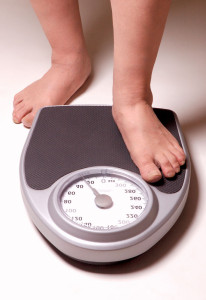![]() The New Year is right around the corner. This is a time for reflection and planning. Have you thought about what you would like to change in the coming year? Many people resolve to get more exercise, eat healthy, lose weight, spend more time with family and friends, etc. at the beginning of a new year. Diabetics usually are a little more specific with their resolutions. Here are some ways to start the year in optimal health.
The New Year is right around the corner. This is a time for reflection and planning. Have you thought about what you would like to change in the coming year? Many people resolve to get more exercise, eat healthy, lose weight, spend more time with family and friends, etc. at the beginning of a new year. Diabetics usually are a little more specific with their resolutions. Here are some ways to start the year in optimal health.
Check in With Your Doctor
- If you aren’t already, make sure to see your doctor two to four times this year
- Review and continue to follow your testing schedule, tweaking if necessary
- Make note of your most recent A1C, blood pressure, and cholesterol numbers
- Start or review your meal plan with your diabetes educator, tweaking if necessary
- Don’t forget to get a renal function and microalbumin test
Get Moving!
- Ramp up physical activity. Remember something is better than nothing at all.
- Take your medications exactly as they are prescribed
Care for Your Whole Body
- Get an annual eye exam
- Go to the dentist twice per year
- Examine your feet for cuts and/or sores daily
- Brush and floss daily
- Get your flu shot
Don’t Bottle Up Stress! Deal With It Right Away Using One of These Techniques
- Deep breathing
- Learning to say no
- Asking for help when you need it
- Making time for you
- Getting enough sleep (7-8 hours is ideal)
- Exercising (with other people if that motivates you)
- Seeing a counselor or social worker if none of the above approaches are effective
Although this is a long and possibly daunting list, it is realistic and doable. With the help of your doctor, you can get 2018 started off on the right foot. Share your resolutions with someone to hold yourself accountable.















 We hear all the time from multiple sources to get more exercise. Everyone has their reasons for not getting enough. We all know we should do it more, but feel like we don’t have enough time or energy to do so. If you suffer from asthma, you may fear that working out would make your symptoms worse. Here are some of the best options for exercising with asthma
We hear all the time from multiple sources to get more exercise. Everyone has their reasons for not getting enough. We all know we should do it more, but feel like we don’t have enough time or energy to do so. If you suffer from asthma, you may fear that working out would make your symptoms worse. Here are some of the best options for exercising with asthma The year has flown by and Thanksgiving is only a few weeks away. For many, this holiday means overindulgence. For diabetics, it can be a very difficult time for many reasons. The hardest is resisting temptations. Who doesn’t love seconds or even thirds of their favorite dishes; i.e., mashed potatoes? An important thing to remember is “everything in moderation.” Here are a few tips to budget your calories and manage your blood sugar while still enjoying this wonderful time with family.
The year has flown by and Thanksgiving is only a few weeks away. For many, this holiday means overindulgence. For diabetics, it can be a very difficult time for many reasons. The hardest is resisting temptations. Who doesn’t love seconds or even thirds of their favorite dishes; i.e., mashed potatoes? An important thing to remember is “everything in moderation.” Here are a few tips to budget your calories and manage your blood sugar while still enjoying this wonderful time with family. Asthma is a challenging, but very treatable illness. There are many medications and tools available to help relieve symptoms. Did you know that asthma prevention can start in your kitchen? Not all foods are created equal. What foods might be best for asthmatics? There are even healthy foods that may worsen your asthma symptoms.
Asthma is a challenging, but very treatable illness. There are many medications and tools available to help relieve symptoms. Did you know that asthma prevention can start in your kitchen? Not all foods are created equal. What foods might be best for asthmatics? There are even healthy foods that may worsen your asthma symptoms. Treating diabetes can be a very time consuming, day-after-day process, but today’s diabetic has a plethora of different treatment options available — more than ever before.
Treating diabetes can be a very time consuming, day-after-day process, but today’s diabetic has a plethora of different treatment options available — more than ever before. Music is a wonderful stress release for many people. For some, the release comes from listening to the music and relating to the lyrics. It strikes a chord inside of us all. For others, making music is the release. Whether you play an instrument or sing, you are successfully dissolving the stress of your day-to-day. Congratulations! You have found an outlet.
Music is a wonderful stress release for many people. For some, the release comes from listening to the music and relating to the lyrics. It strikes a chord inside of us all. For others, making music is the release. Whether you play an instrument or sing, you are successfully dissolving the stress of your day-to-day. Congratulations! You have found an outlet. The number of Americans that suffer from depression, also known as Major Depressive Disorder is increasing all the time. Depression is more than being sad or in a bad mood. This condition is a chemical imbalance in the brain.
The number of Americans that suffer from depression, also known as Major Depressive Disorder is increasing all the time. Depression is more than being sad or in a bad mood. This condition is a chemical imbalance in the brain.  Summer is coming to a close for students in North Carolina. The change of seasons and environment can spell trouble for asthma and allergy sufferers. They already know their at-home triggers and how to combat them, but have less control over their environment at school. Common classroom triggers include pollen, dust mites, mold, chalk dust, and pet dander. With the help of school administrators and parents, students can remain focused on their studies and less on their allergies.
Summer is coming to a close for students in North Carolina. The change of seasons and environment can spell trouble for asthma and allergy sufferers. They already know their at-home triggers and how to combat them, but have less control over their environment at school. Common classroom triggers include pollen, dust mites, mold, chalk dust, and pet dander. With the help of school administrators and parents, students can remain focused on their studies and less on their allergies. As a diabetic patient or parent, you are well aware that you need an emergency diabetes bag. This is one project that can’t be put off.
As a diabetic patient or parent, you are well aware that you need an emergency diabetes bag. This is one project that can’t be put off. Have you thought about what you would do if your insulin pump were to fail? It is important to have a plan in place for when and if this occurs. You can create a fail-safe plan for the rare event of a pump failure by following these four steps.
Have you thought about what you would do if your insulin pump were to fail? It is important to have a plan in place for when and if this occurs. You can create a fail-safe plan for the rare event of a pump failure by following these four steps. Keep the following items with you at all times, making sure all are within the prescription limits and not expired:
Keep the following items with you at all times, making sure all are within the prescription limits and not expired: Food industry workers at a microwave popcorn factory were the first to get sick from inhaling the vapors from artificial flavorings. The vapors caused symptoms such as coughing, wheezing, and shortness of breath, similar to those of chronic obstructive pulmonary disease (COPD).
Food industry workers at a microwave popcorn factory were the first to get sick from inhaling the vapors from artificial flavorings. The vapors caused symptoms such as coughing, wheezing, and shortness of breath, similar to those of chronic obstructive pulmonary disease (COPD). If you have diabetes, stress can take a larger toll on your body. When the body is under stress, it acts as if it is under attack. Cortisol (the stress hormone) levels rise, causing your body to store energy in the form of glucose and fat. In diabetics, this process can be disrupted. The glucose is released, and if it can’t be stored, it builds up in your bloodstream.
If you have diabetes, stress can take a larger toll on your body. When the body is under stress, it acts as if it is under attack. Cortisol (the stress hormone) levels rise, causing your body to store energy in the form of glucose and fat. In diabetics, this process can be disrupted. The glucose is released, and if it can’t be stored, it builds up in your bloodstream. January is the height of flu season, and if you haven’t been vaccinated, it’s not too late to do so.
January is the height of flu season, and if you haven’t been vaccinated, it’s not too late to do so. 



 With the advent of apps for smartphones, there’s something nostalgic about using a pen and paper. At meetings, I often find myself still jotting down action items in a notebook instead of in my iPad. But, when it comes to tracking my health, I’m grateful to have so many intuitive and user-friendly apps at my disposal. I can track my sleep habits, exercise and diet easily with my smartphone. There are also a number of useful health tracking apps available for individuals with specific conditions like asthma and diabetes.
With the advent of apps for smartphones, there’s something nostalgic about using a pen and paper. At meetings, I often find myself still jotting down action items in a notebook instead of in my iPad. But, when it comes to tracking my health, I’m grateful to have so many intuitive and user-friendly apps at my disposal. I can track my sleep habits, exercise and diet easily with my smartphone. There are also a number of useful health tracking apps available for individuals with specific conditions like asthma and diabetes.
 Gender plays an interesting role in how diabetes affects those with the condition. For example, pregnant women carrying a baby boy are at a higher risk of developing
Gender plays an interesting role in how diabetes affects those with the condition. For example, pregnant women carrying a baby boy are at a higher risk of developing 









